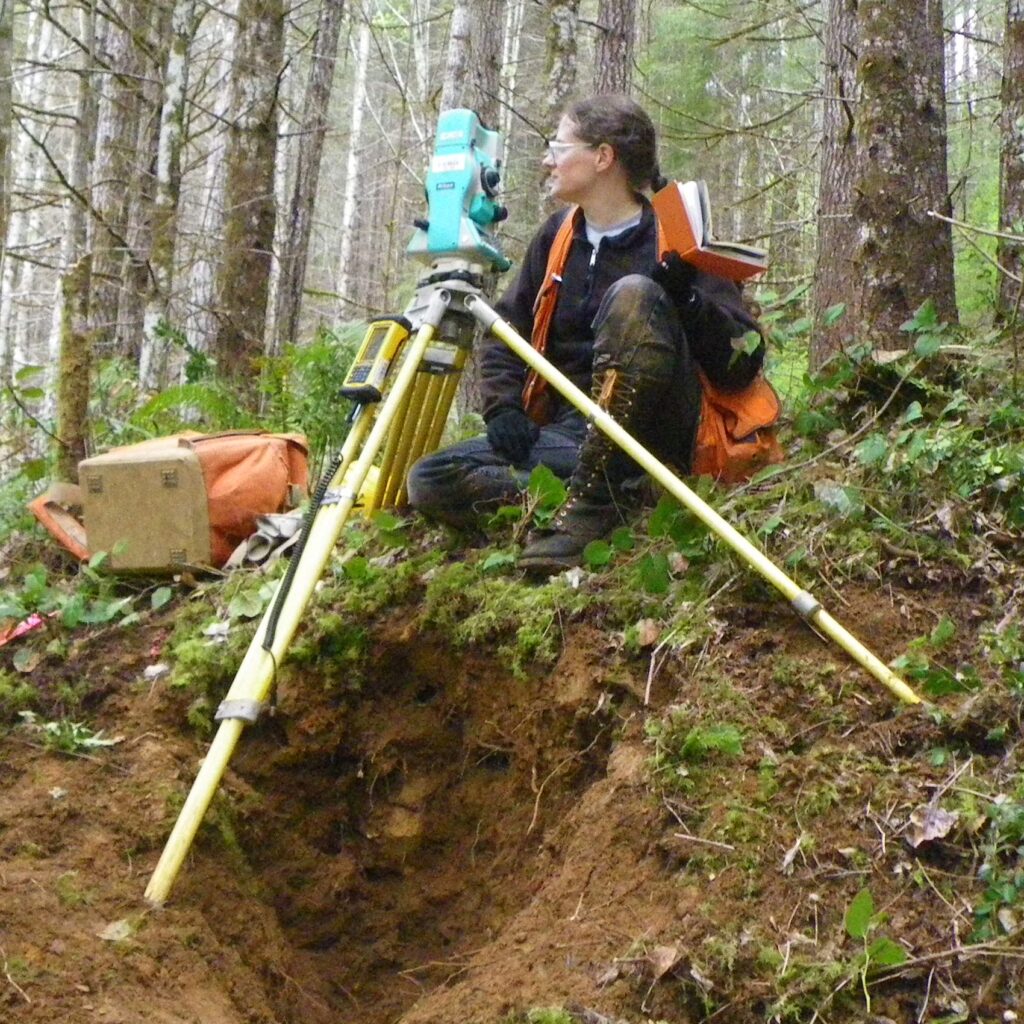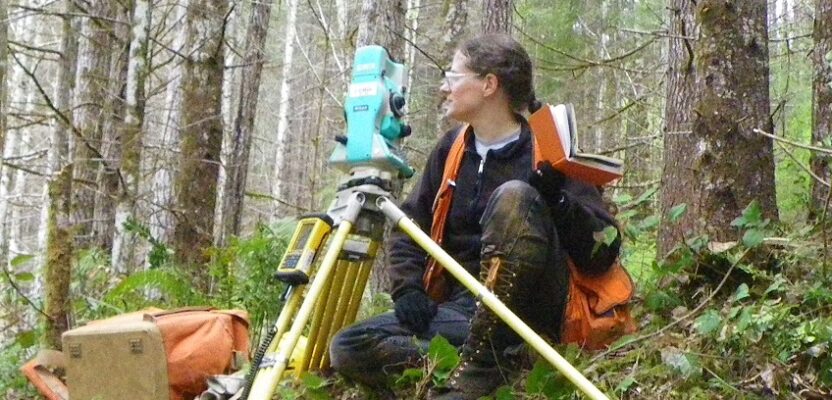When surveyors are searching for a corner monument, a deed, or an unrecorded plat, they are always asking themselves, “How far should I go to find this?” These searches always raise a conundrum, because, as the theory goes, not finding something does not prove that it does not exist, but only by finding something can one prove its existence.
It is a commonly understood tenet of surveyors that we must “follow in the footsteps” of the original surveyor and it seems to be a standard operating procedure to find the original monument; or more technically-speaking, the position of the original monument that was set by a surveyor. I’m mostly speaking from my experience, where I practice, in Pennsylvania and Maryland.
How about when that deed calls for a stake and you know that the description has been copied over since the original survey in 1902? Or better yet, how about when it cites a “point” for the corner? What is the surveyor required to find? Even when the call is for something as vague as “pin,” or “iron pipe”? Do we dig up the whole area, just looking for anything that might be a corner marker?
Recently, some of the survey technicians who work under my supervision performing the field work, have had a little friendly competition to see who can dig the deepest to find an old pipe, pin, or other type of called-for monument. I think it is good for them to learn to dig deep for a corner. When I was younger, I didn’t always appreciate the value of those original corner markers. The one piece of practical advice that I received in this regard was the reminder that if you found the corner, you didn’t have to come back to set a corner there. That made sense. I was all about working smarter and not harder.
When I worked with my late friend, Ed Warfel, we were looking for a corner one day that called for an “iron pipe on the bank of the creek.”
 When we measured the deed distance along an old fence line that separated woods from a meadow, the prescribed distance took us past the end of the fence and further, beyond the top of the bank along the creek. Ed decided that we should pull the tape out the full distance that was listed in the deed for this particular line. That distance fell about two feet into the stream.
When we measured the deed distance along an old fence line that separated woods from a meadow, the prescribed distance took us past the end of the fence and further, beyond the top of the bank along the creek. Ed decided that we should pull the tape out the full distance that was listed in the deed for this particular line. That distance fell about two feet into the stream.
We stood there waving the magnetic locator around the edge of the water. There were several rocks there with iron ore, which set off the signal on the locator. Every time that it went off, Ed rolled up his sleeves and felt around the submerged rocks to see if there was a pipe left in place.
I was ready to give up as soon as I saw the precipitous drop from the top of the creek bank to the edge of the water. My assumption was that the pipe had been washed away, but Ed kept looking and fishing around in the water with his bare hands. I should tell you that this was in the spring and the water was running fairly swiftly and very cold. After about 30 minutes of searching and finding rocks with iron ore and bits of old barbed wire, we left to eat lunch.
After lunch, Ed drove back into the meadow and we pulled the distance down along the fence line again. It took us to the same spot, so I figured, good enough, we proved that we were looking in the right place, but then Ed got the magnetic locator out and searched for another half-hour.
Now, this is the part where you want me to say that, by golly, he found a pipe, but, no, there was no pipe there. Ed told me that his theory was that he had to prove to himself that the corner no longer existed. It taught me a lesson that day.
What I learned is that each of us has to make up our minds as to how far one should go to prove beyond a reasonable doubt that the missing piece of evidence does not exist. There’s no easy way to give a young surveyor-in-training advice on how far to go in seeking the truth. I think that it is something that each surveyor is trying to answer on a daily basis.

